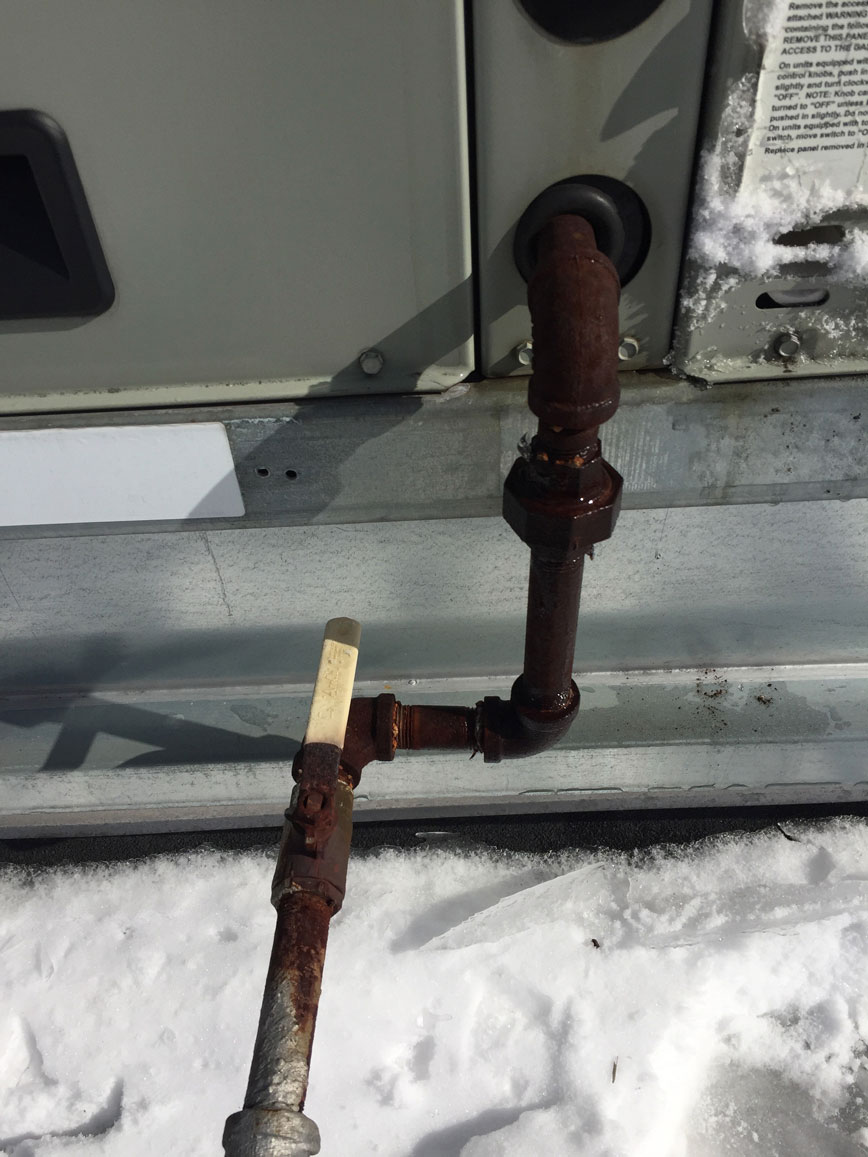
By Adam J. Hansen
When firefighters begin their careers, formal training starts with either a trip to the academy or a Firefighter I class. It is these institutions which provide the basic knowledge and where the groundwork is set. After the foundation is poured, it is up to the individual firefighter to go back to their respective department and decide what kind of career they will build.
Recruits returning from the academy are eager to get on the line and go to work. Let’s face it, they just completed three to four months of grueling training where firefighting was preached and pounded into them day in and day out. Stretching and advancing lines, throwing ladders, ventilation, forcible entry, rapid intervention…did I mention throwing ladders? When firefighters graduate the academy, they are geared up and ready to fight fire.
But what about the other 80 percent of firefighting? What happens when a report of a “possible structure fire” comes in and the first arriving company reports “nothing showing”? The young firefighter who moments ago was full of adrenaline now enters the structure with a set of irons in hand to find no smoke or fire. Quickly shifting gears, the firefighter asks “Well, what the hell do I do now?”
Eighty percent an arbitrary number, however it’s intended to stress a point. For some of us, the core disciplines of firefighting do not necessarily make up the bulk of what we perform on a daily basis. In my opinion, the majority of work we execute is the “art of investigation.” As mentioned in a previous write up (The Rookie Doesn’t Know A Trade), it would be great if fire academies were able to teach the nuances of boilers, stoves, light fixtures, generators, plumbing, electrical, and so forth. Firefighters without much experience would be well served if taught the in-depth workings of these areas, but this idea is completely unattainable. There isn’t enough time to teach the infinite hazards we respond to. It isn’t until members are on the line that they begin to grasp the “art of investigating.”
When we respond for an “odor of smoke in the building” at a commercial occupancy, we many times arrive to find nothing showing. Upon making entry into the building, crews frequently find an odor of something burning; not Class A material, but more like the classic “I think it’s electrical,” or “I smell rubber burning.” While interior companies investigate deeper into the building to find the source, the incident commander (IC) typically orders a company to check the roof.

When the IC gives the order to check the roof on a commercial building with nothing showing, what exactly are we looking for? I’ve asked this question of many rookies entering the fire service. The answers I get range from “I guess we would check to see if the roof was on fire” to “I have no freaking clue.” Unless the rookie had prior experience, I wouldn’t expect the answer to be much better. With the recent rate of turnover in many departments, it isn’t unheard of to have an extremely young crew puzzled when given this task. If given the order to check the roof on a commercial building with an odor of something burning, one area in need of investigation is the heating, ventilation, and air conditioning (HVAC) system.
A rooftop unit (RTU) is an HVAC system that contains all the necessary components needed to condition air in a single unit. Upon making entry onto the roofs of many commercial buildings, these can be identified as basically one or several large metal boxes. The following is a limited overview of the components of an RTU.
- Construction: Primarily located on the rooftops of structures, RTUs are exposed to the elements year-round: snow, wind, and the sun. It is essential the interior components are protected to keep the unit functioning. Units are primarily constructed within a framing system made of galvanized steel with service panels.

- Blowers: RTUs many times have a squirrel cage blower powered by an electric motor to move the conditioned air throughout the building. Multiple blowers may exist in large commercial units and are typically placed both (1) at the end of the unit and (2) at the beginning (supply fan). These blowers use rubber belts.
- Evaporator: It is a common misconception that HVAC systems actually “cool the air.” Instead they remove the heat out of the existing air. The evaporator coils are the part which removes the heat from the air.
- Compressor: This is the heart of the cooling function of HVAC. It compresses the refrigerant from a low to high vapor pressure.
- Blower/fan motor: Blowers, powered by electric motors, are placed sometimes both at the beginning and the end of the unit in order to move air into the system, throughout the ductwork, and into the structure.
- Heat exchanger: When producing heat for a building, heated air from the burner is pulled by an inducer motor through the heat exchanger and then discharged safely into the outside atmosphere.
- Economizer: Saves energy by using cool outside air to assist in the cooling of an indoor space. The economizer opens and closes accordingly.
- Filter racks or chambers: Air filters are most always present to provide clean air for people inside of the structure. Filters tend to be placed near the front of the system to keep all downstream components clean.
- Sound attenuators: Blowers inside RTUs can create much vibration, creating unwanted loud noises throughout the ductwork system. To prevent this from happening, vibration isolators are inserted into the ductwork and between the fan compartment.
An easy yet beneficial drill to run with new firefighters is to walk them through the investigation of an RTU. A great time to do this is to piggyback it on a day when drilling with ladders. Using your firehouse or other building at your disposal with an RTU, simply throw a ladder and get up to the roof.
Training
Explain and discuss the following:
- What an RTU is and why it must be investigated for an unknown “odor of something burning” within commercial occupancies.
- Drive belts are present within RTUs.
- Drive belts are simple accessories made of rubber-based material.
- Under-tensioning can cause slippage of the belt, leading to overall belt failure.
- Over-tensioning can cause bearing and belt failure.
- If not serviced and replaced, over time the rubber-based material begins to dry up, resulting in decay and eventual failure of the belt.
- It is a bad assumption that the belt completely burn up and fall off the pulleys to present an odor and/or actual smoke emitting from interior distributor vents.
- Sometimes a belt could still be attached to the pulleys and have a cut, tear, or simply be rubbing against the inside of the pulley, creating an odor and/or smoke in a building.
- The source of “an odor of burning” in a building without an actual fire is many times found to be a worn-out belt that has failed within the RTU.
- When a belt wears out, especially at the supply blower, the burning of the rubber can send the odor and or smoke throughout the ductwork system.
- Depending upon the number of RTUs and zones they supply, the burning smell can be localized to one section or can spread throughout the entire building.

- To check to see if a belt burnt or wore out, service panels of the RTU must be removed to investigate. Several panels will be present. If not proficient with investigating these units, you may have to open several before finding the compartment housing the fan, motor, and belt.
- Often there is a warning picture showing a belt and pulley with a finger stuck in it. If this picture is present, the belt is most likely behind this service panel.
- Service panels are most always held in place with 5/16- or ¼-inch hex head sheet metal screws. It’s great practice to keep a six-in-one screwdriver in your gear pocket. Carrying this tool will prevent you from having to climb up and down a ladder to get the proper-sized nut driver from your toolbox.

- An electrical service disconnect will be present on each unit. To investigate a worn-out belt in an RTU, it is essential power is shut off. Shutting off the power prior to investigating will prevent serious injury.
- The burner will most likely be supplied by gas. The gas valve will be of the quarter-turn ball valve type. It may be necessary to shut off the gas when dealing with other types of emergencies, such as cracked heat exchangers. These other types of emergencies will be discussed in future articles.

- If you get to the roof and can’t find an RTU, don’t panic. Sometimes commercial buildings may use split systems. Other times, in smaller commercial buildings there may be a smaller unit located in the plenum space between the roof and the ceiling. To locate, simply lift up a panel to the drop ceiling.
For most firefighters who have been on the job for some time, this is a simple step during your investigation that over time becomes second nature. We must stop for a few seconds and assume new firefighters coming on our jobs are not aware of what RTUs are and how a simple, worn-out belt could create such havoc. Remember, new firefighters have been well trained to fight fully involved bedroom fires, not necessarily to investigate appliances. Although simple and mundane, walking a new firefighter through investigating a worn-out belt could have a far-reaching impact on the future of their career.

ADAM J. HANSEN is a lieutenant assigned to Engine 7 in the Milford (CT) Fire Department, where he has worked since 2006. He began his career as a volunteer in Branford, Connecticut, in 1999. Hansen has a BS degree in fire science (fire administration) and a minor in criminal justice from the University of New Haven. He is a nationally registered paramedic and is a state-certified fire service instructor 2, fire officer 2, incident safety officer, pump operator, and aerial operator. He is certified in rescue operations: trench.

